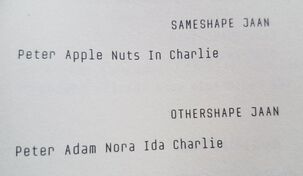|
In conversation with a young scholar in India who is writing a paper on KALA PANI, I found myself remembering how much I enjoyed working with code in this book. Code, of course, is a way of saying the unsayable. In the world of KALA PANI, there are relationships—for instance between the new government and the six world travellers; between Sameshape and Othershape—where the unsayable has happened. The book speaks in code (and fragment) to take its narrative power back. The new government in KALA PANI was inspired by the fascism that was rising in India. I had seen how tactics of terror were employed by the state first-hand in Gujarat in 2002 while volunteering in refugee camps. The new government in the book foreshadows the political developments in India, what we are seeing now--where truth-telling and code-making must necessarily go hand-in-hand as structure/anti-structure to counter the repression upon narrative and information enacted by the regime.
The instinct to write in code, of course, goes way back. Mystical and tantric texts in ancient India, for example, employed code, sandhyabhasa, to conceal different "planes of truth or of being." I am thinking about both of these together right now. Code as resistance; code as initiation. The uses of ambiguity. The deep substructure that extends as empathy between politics and spirituality. What we know and who we are—and how language contributes to both, be it in the revealing or the concealing.
0 Comments
Your comment will be posted after it is approved.
Leave a Reply. |
Get updates of New blog postsconnect with me ON SOCIALSArchives
April 2024
|

 RSS Feed
RSS Feed